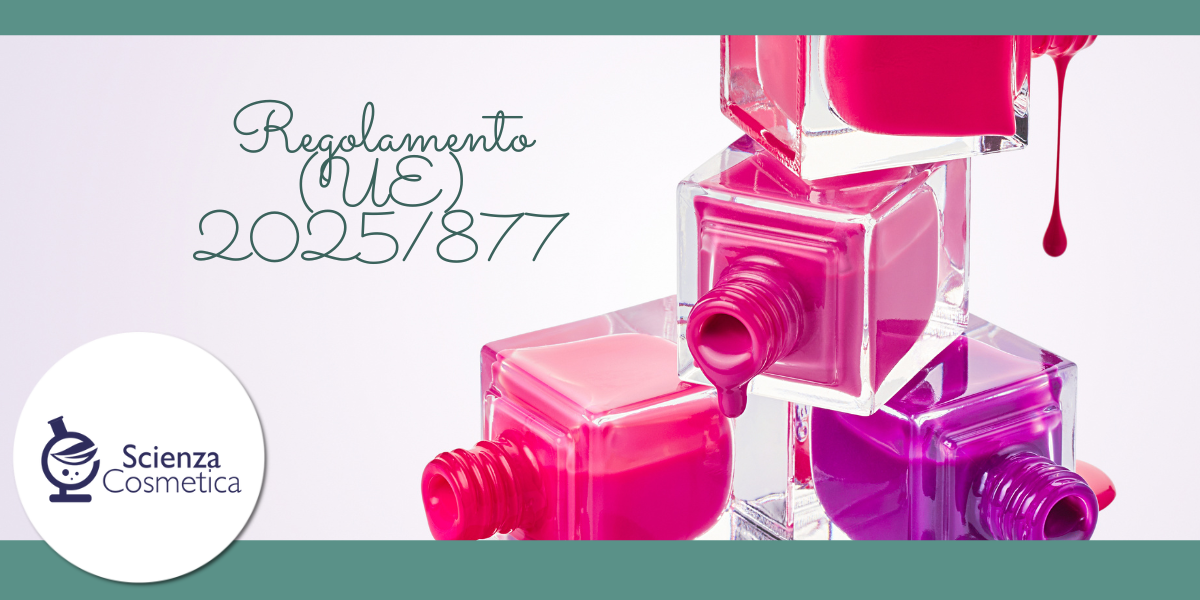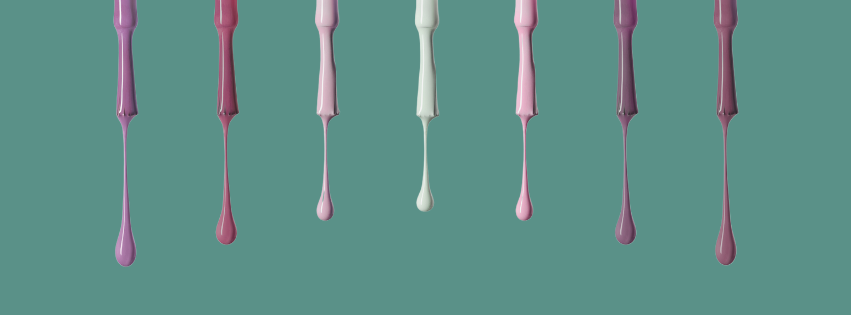19/09/2025
How does Regulation (EU) 2025/877 change the future of your formulations?
The cosmetics sector in Italy, but more precisely in Europe, is subject to a rather complex regulatory framework with a clear objective, already set out in Article 1 of Regulation (EC) No. 1223/2009 (the Cosmetics Regulation), namely to ensure a high level of protection of human health. It should be noted that although the Regulation “governs” the finished cosmetic product, it pays particular attention to the ingredients and their properties, influencing their selection. It is a highly structured Regulation that often serves as an inspiration for other countries around the world.

Specifically regarding ingredients, among the provisions of the legal text, Article 15 — as a general rule — prohibits the use of substances classified as carcinogenic, mutagenic or toxic for reproduction (the so-called CMR substances) in cosmetic products (it should be noted, in fact, that a CMR substance may be used in cosmetic products if the conditions set out in Article 15.1 or 15.2 are met).
.png)
Classification, labelling and packaging of substances and mixtures
The identification and study of these properties (that is, classification) derive from Regulation (EC) No. 1272/2008 (better known as the CLP Regulation) on the classification, labelling and packaging of substances and mixtures.
The CLP Regulation requires manufacturers, importers and downstream users to classify the substances and mixtures they place on the market, that is, to evaluate the available data in relation to the criteria established by the Regulation itself in order to determine their properties.
When a substance meets the classification criteria, it is assigned a hazard class, which identifies the nature of the physical, health or environmental hazard, and a hazard category, which specifies the severity of the hazard.
The classification of a substance as CMR usually takes place at EU level, through the assignment of a harmonised classification, which becomes part of Regulation (EC) No. 1272/2008 by means of the ATPs (adaptations to technical progress). To date, numerous ATPs have been adopted (well over 20). Commission Delegated Regulation (EU) 2024/197 (better known among professionals as the 21st ATP to the CLP Regulation) introduced or amended certain entries in Annex VI to the CLP Regulation (in particular, in Table 3, which contains the harmonised classification and labelling entries).
Regulation (EU) 2025/877
Regulation (EU) 2025/877 intervenes precisely in this context, acting as a “bridge”, since it updates the annexes of the Cosmetics Regulation to reflect the most recent CMR classifications established under the CLP Regulation.
In this regard, among its recitals we read:
“In order to uniformly implement the prohibition of the use of CMR substances in the internal market, ensure legal certainty, in particular for economic operators and national competent authorities, and guarantee a high level of protection of human health, all CMR substances should be included in the list of prohibited substances in Annex II to Regulation (EC) No. 1223/2009 and, where appropriate, removed from the lists of restricted or authorised substances in Annexes III to VI to the same Regulation. Where the conditions of Article 15(1), second sentence, or Article 15(2), second subparagraph, of Regulation (EC) No. 1223/2009 are fulfilled, the lists of restricted or authorised substances in Annexes III to VI to that Regulation should be amended accordingly.”

It introduces specific amendments to Annex II (i.e. the list of substances prohibited in cosmetic products) and Annex III (i.e. the list of substances that cosmetic products may not contain, except in compliance with certain restrictions) of Regulation (EC) No. 1223/2009.
Among the amendments introduced by the Regulation, we highlight the following:
In Annex II, entries No. 1731 (Diphenyl(2,4,6-trimethylbenzoyl)phosphine oxide) and No. 1745 (Dimethyltolylamine, N,N-dimethyl-p-toluidine) have been added;
In Annex III, entry No. 311 has been deleted due to the inclusion of the substance in Annex II.
Date of application
Regulation (EU) 2025/877 shall apply from 1 September 2025.
Practical implications for cosmetics industry professionals
Regulation (EU) 2025/877 has a direct and immediate impact on the formulation, production and placing on the market of cosmetic products. Professionals must act promptly and accurately to ensure compliance. The main actions to be taken are:
reviewing ingredient portfolios,
reformulating products,
updating documentation.
Do you need support in adapting to the new Regulation?
This insight has been prepared in collaboration with our partners at Scienza Cosmetica.
You can get in direct contact with them by visiting our Services and Consulting section: https://www.cosmetitrovo.it/login
Fonti
Regolamento (CE) n. 1223/2009 del Parlamento europeo e del Consiglio del 30 novembre 2009 sui prodotti cosmetici
Regolamento (CE) n. 1272/2008 del Parlamento europeo e del Consiglio, del 16 dicembre 2008, relativo alla classificazione, all'etichettatura e all'imballaggio delle sostanze e delle miscele che modifica e abroga le direttive 67/548/CEE e 1999/45/CE e che reca modifica al regolamento (CE) n. 1907/2006
Regolamento Delegato (UE) 2024/197 della Commissione del 19 ottobre 2023 che modifica il regolamento (CE) n. 1272/2008 per quanto riguarda la classificazione e l’etichettatura armonizzate di determinate sostanze
Regolamento (UE) 2025/877 della Commissione del 12 maggio 2025 che modifica il regolamento (CE) n. 1223/2009 del Parlamento europeo e del Consiglio per quanto riguarda l’utilizzo nei prodotti cosmetici di determinate sostanze classificate come cancerogene, mutagene o tossiche per la riproduzione
Ciranni A. Regolamento 877/2025: aggiornamento allegati Regolamento 1223/2009 (2025). Cosmetic Technology (4): 78.


